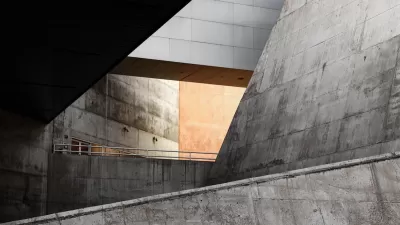The House voted for the tenth time to approve the pipeline, and a split decision by the Nebraska Supreme Court removes a key objection of President Barack Obama to ruling on Keystone XL. The Senate begins debate Monday.
"The GOP-controlled House of Representatives has voted 266-153 to approve the Keystone XL pipeline despite a presidential veto threat, just hours after Nebraska's Supreme Court, in a split decision [PDF], cleared the way for the controversial project," writes Krishnadev Calamur for NPR's the two-way on Friday's two important events that advance the beleaguered project.
CNN indicates that "more than two dozen Democrats join(ed) nearly all Republicans to pass the measure," and that it was "the tenth time the GOP-controlled House has sent a bill approving the pipeline to the Senate," but the first time the Senate will be controlled by Republicans.
A day earlier, Amy Harder of The Wall Street Journal reports that the Senate Energy and Natural Resources Committee, newly chaired by Lisa Murkowski (R-Alaska), approved without amendments the Keystone XL legislation to cross the United States-Canadian border but expects to see amendments from both advocates and opponents when it goes to the Senate floor on Monday. See the committee's press release.
While a majority of the seven Nebraska Supreme Court justices sided with the Nebraska landowners "who challenged the state law giving Nebraska's governor authority to approve the pipeline's route," writes Calamur, "Nebraska's Constitution requires a supermajority of five to strike down legislation as unconstitutional."
As noted earlier, the landowners had claimed that the law allowing Gov. Dave Heineman to alter the pipeline route around the sensitive Ogallala Aquifer was unconstitutional, stating that only the Public Service Commission could do it. Four Supreme Court justices agreed; one shy needed to strike it down.
"The court's decision allows the U.S. State Department, which has been reviewing the pipeline for more than six years, to decide whether the project to carry oil from Canada to the Gulf of Mexico is in the national interest," writes Calamur.
However, The Wall Street Journal reports that "there was no timeline to complete the agency’s review, indicating it could be months before an administration decision comes," notwithstanding that fact that "(a) State Department environmental review last year concluded the pipeline wouldn't have a significant effect on greenhouse gas emissions," writes Calamur.
That's where Congress steps in—to force approval by "grant(ing) the project a permit immediately," adds Calamur.
Some analysts suspect that when crude is selling for less than $50 a barrel, the economics don't warrant building the pipeline, as noted here and here.
But Alison Sider of The Wall Street Journal writes that the oil industry doesn't buy that argument, notwithstanding the lower price for oil sands crude.
While the U.S. oil price has plunged by 55% since June to $48.36 a barrel on Friday (Jan. 9), much of Canada’s crude oil only fetches a little more than $30 a barrel. One reason is that there aren’t enough routes to market, leaving Canadian oil bottlenecked inside the country.
As noted recently, TransCanada Corp., the pipeline builder, has a Plan B that comes with its own set of problems, but won't need the clearances of the international pipeline: crude-by-rail.
FULL STORY: House OKs Keystone XL Pipeline Despite Obama Veto Threat

What ‘The Brutalist’ Teaches Us About Modern Cities
How architecture and urban landscapes reflect the trauma and dysfunction of the post-war experience.

‘Complete Streets’ Webpage Deleted in Federal Purge
Basic resources and information on building bike lanes and sidewalks, formerly housed on the government’s Complete Streets website, are now gone.

HUD Cuts Could Derail Mortgage Underwriting Agency
Staffing cuts at the Federal Housing Administration could imperil affordable housing projects and mortgage programs for new homeowners.

University of Hawai‘i Appoints New Architecture School Dean
The University of Hawai‘i at Mānoa has named Mo Zell as the new dean of its School of Architecture, bringing over two decades of experience in academia, innovative educational programs, and industry partnerships to advance design education.

Part of San Francisco Waterfront Highway to Become Pedestrian-Only in April
Two miles of the ‘Great Highway’ will be permanently closed to cars, in part due to erosion that makes the road unsafe for vehicles.

El Paso Wastewater Purification Facility Breaks Ground
As water supplies become strained and technology advances, cities look to wastewater as a viable source of drinking water.
Urban Design for Planners 1: Software Tools
This six-course series explores essential urban design concepts using open source software and equips planners with the tools they need to participate fully in the urban design process.
Planning for Universal Design
Learn the tools for implementing Universal Design in planning regulations.
North Jersey Transportation Planning Authority (NJTPA)
Economic & Planning Systems, Inc.
UCLA Lewis Center for Regional Policy Studies
Mpact (formerly Rail~Volution)
Chaddick Institute at DePaul University
City of Piedmont, CA
Great Falls Development Authority, Inc.
HUDs Office of Policy Development and Research


























